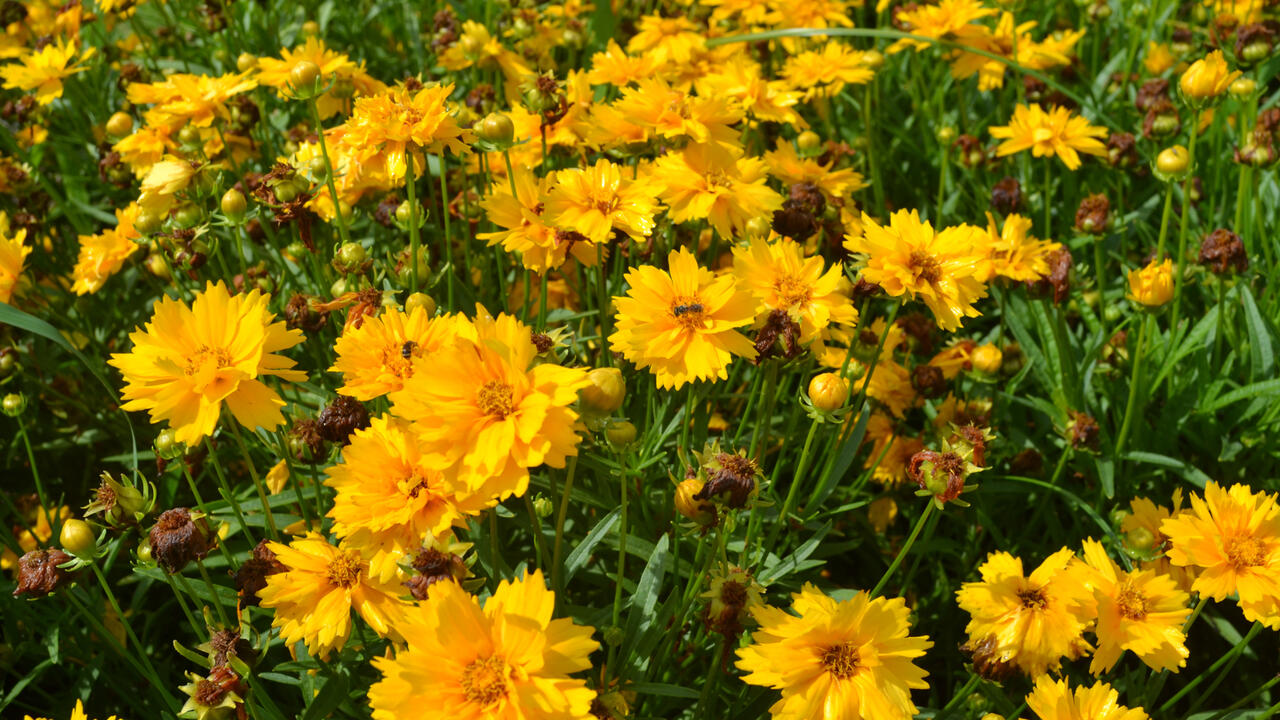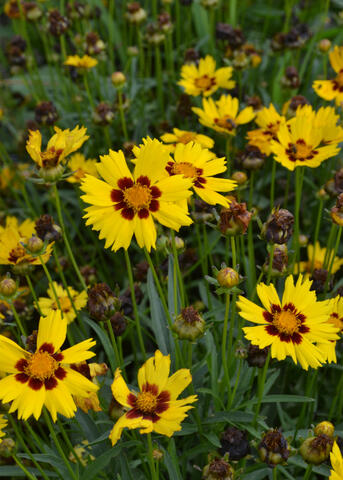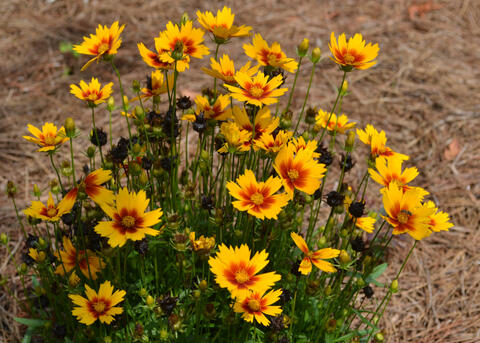Coreopsis, our state wildflower here in Mississippi, is getting the spotlight it deserves at Mississippi State University’s South Mississippi Branch Experiment Station in Poplarville.
During a recent visit to their trial gardens, I had the chance to check out several varieties currently being evaluated.
One that immediately stood out to me is grandiflora SunKiss. This compact, vibrant perennial adds a cheerful burst of golden yellow, really lighting up the landscape.
The large, daisy-like blooms are some of the biggest I’ve seen among the grandiflora types. Each has bright yellow petals with a bold, dark red eye in the center. The deep green, lance-shaped foliage forms a tidy, rounded mound, giving the plant a neat and polished look.
Another variety I really like is grandiflora Double the Sun.
This selection is covered in fully double, golden-yellow flowers that remind me of little marigolds or pom-poms. These bright, fluffy blooms bring color and texture to beds, borders and containers. Its compact size makes it perfect for smaller garden spaces like patios or raised beds.
And then there’s UpTick Gold and Bronze, a real head-turner that has an extended bloom season and bicolor flowers.
The daisy-like blooms have golden-yellow petals with a warm, bronze-red center that gradually fades outward. UpTick Gold and Bronze forms a tidy mound. When it’s in full bloom, the colors seem to glow, especially in the late afternoon sun.
I love using coreopsis in the landscape as they are beautiful and offer many benefits.
Their bright, daisy-like blooms attract a wide range of pollinators, including bees, butterflies and other beneficial insects, making them a great addition to pollinator-friendly gardens. Because they are low-maintenance, these plants are ideal for beginner gardeners or anyone looking to reduce time spent on upkeep.
I’ve found they work beautifully as border plants, in mass plantings for bold color, or even in wildflower meadows for a more natural look.
Coreopsis are a smart choice for water-wise gardening. Once established, they handle our hot Mississippi summers with ease.
Their drought tolerance is impressive, and while I’ll give them a drink during long dry spells, they’re definitely not needy. This makes them a reliable option for areas that don’t get consistent rainfall or for gardeners who want to conserve water.
To keep them blooming strong, I try to deadhead spent coreopsis flowers regularly and give them a light trim in midsummer to encourage fresh growth. I also apply a light dose of balanced fertilizer in early spring to get them off to a healthy start.
Make sure not to overdo it with water or fertilizer -- too much of either can lead to leggy growth or fewer blooms.
Each of these coreopsis varieties brings its own charm to the garden, but they all share that easy-going nature, bright color and tough performance that make them such a joy to grow. Whether you’re looking to attract pollinators, add long-lasting color, or simply plant something you can count on year after year, coreopsis is a sunny solution that never disappoints.
Images
Contacts
-
 Extension Agent IV*
Extension Agent IV*- MSU Extension- Pearl River County


